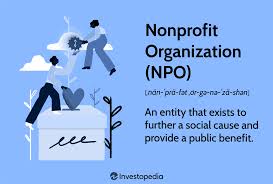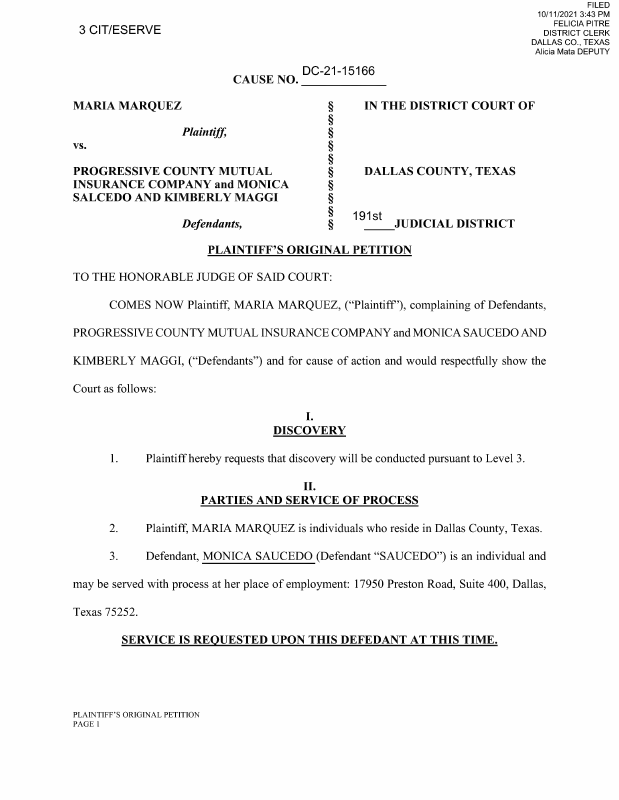The Power of Collaboration: Achieving Success Together
In today’s fast-paced and interconnected world, collaboration has become a key driver of success across various industries and sectors. The concept of collaboration goes beyond mere cooperation; it involves individuals or groups working together towards a common goal, leveraging their unique strengths and skills to achieve greater outcomes.
Collaboration fosters creativity and innovation by bringing diverse perspectives to the table. When people with different backgrounds, expertise, and experiences come together, they can generate fresh ideas and solutions that may not have been possible in isolation. This synergy leads to breakthroughs and advancements that propel organizations forward.
Furthermore, collaboration enhances efficiency and productivity. By dividing tasks based on individual strengths and coordinating efforts towards a shared objective, teams can accomplish more in less time. Communication channels are opened, allowing for seamless information flow and quick decision-making processes.
One of the key benefits of collaboration is the opportunity for continuous learning and growth. Working alongside others exposes individuals to new ways of thinking, problem-solving approaches, and best practices. This exchange of knowledge not only expands one’s skill set but also nurtures a culture of learning within the collaborative environment.
Moreover, collaboration builds strong relationships and fosters a sense of community among participants. When people collaborate effectively, trust is established, bonds are formed, and a supportive network emerges. These connections not only enhance teamwork but also create a positive work environment where individuals feel valued and motivated.
In conclusion, the power of collaboration cannot be underestimated in today’s dynamic world. By embracing collaboration as a driving force for success, organizations can harness the collective intelligence and creativity of their teams to achieve remarkable results. Together, through collaboration, we can overcome challenges, seize opportunities, and create a brighter future for all.
8 Key Benefits of Collaborative Work for Success and Innovation
- Enhances creativity and innovation
- Fosters diverse perspectives and fresh ideas
- Improves efficiency and productivity
- Facilitates seamless communication
- Promotes continuous learning and growth
- Builds strong relationships and trust
- Creates a sense of community and belonging
- Leads to remarkable results through collective effort
7 Drawbacks of Collaborative Work: Challenges and Pitfalls
- Potential for conflicts and disagreements among team members.
- Difficulty in aligning different work styles and preferences.
- Risk of unequal distribution of workload or credit within the collaboration.
- Challenges in maintaining accountability and tracking individual contributions.
- Possibility of groupthink, where diverse viewpoints are suppressed in favor of consensus.
- Time-consuming decision-making processes due to the need for consensus building.
- Dependency on others’ availability and responsiveness, leading to delays.
Enhances creativity and innovation
Collaboration enhances creativity and innovation by bringing together individuals with diverse perspectives, skills, and experiences. When people collaborate, they are able to brainstorm ideas, challenge assumptions, and explore new approaches that may not have been possible working alone. This diversity of thought sparks creativity and leads to innovative solutions that can address complex problems and drive progress. By fostering a collaborative environment that encourages open communication and idea-sharing, organizations can unlock the full creative potential of their teams and stay ahead in an ever-evolving landscape.
Fosters diverse perspectives and fresh ideas
Collaboration is a powerful strategy that fosters diverse perspectives and fresh ideas. When individuals from different backgrounds, experiences, and expertise come together to work towards a common goal, they bring a variety of viewpoints to the table. This diversity of perspectives sparks creativity and innovation, leading to the generation of new and original ideas that may not have emerged in a solo setting. By embracing collaboration, teams can tap into a wealth of creativity and insight, ultimately driving forward-thinking solutions and achieving greater success.
Improves efficiency and productivity
Collaboration significantly enhances efficiency and productivity by leveraging the collective strengths and skills of team members towards a common goal. When individuals work together, tasks can be divided based on expertise, leading to streamlined processes and quicker accomplishment of objectives. Effective communication within collaborative teams facilitates seamless information sharing, enabling swift decision-making and progress. By combining efforts and coordinating effectively, teams can achieve more in less time, ultimately driving productivity levels higher and optimizing overall efficiency.
Facilitates seamless communication
Facilitating seamless communication is a significant benefit of collaboration. When individuals and teams work together towards a common goal, they establish open channels of communication that allow for the smooth flow of ideas, feedback, and information. This seamless communication not only ensures that everyone is on the same page but also promotes transparency, clarity, and understanding among collaborators. By fostering effective communication, collaboration enables quick decision-making, timely problem-solving, and cohesive teamwork, ultimately leading to more efficient and successful outcomes.
Promotes continuous learning and growth
Collaboration promotes continuous learning and growth by providing individuals with opportunities to engage with diverse perspectives, share knowledge, and acquire new skills. Working collaboratively exposes individuals to different ways of thinking and problem-solving approaches, fostering a culture of curiosity and innovation. Through collaboration, individuals can expand their expertise, learn from their peers, and stay updated on industry trends, leading to personal and professional development. This constant exchange of ideas and experiences within a collaborative environment nurtures a mindset of lifelong learning, empowering individuals to adapt to change and thrive in dynamic settings.
Builds strong relationships and trust
Collaboration plays a crucial role in building strong relationships and fostering trust among individuals and groups. When people work together towards a common goal, they have the opportunity to communicate openly, share ideas, and support one another. This collaborative environment promotes mutual respect, understanding, and appreciation for each other’s contributions. As relationships strengthen through collaboration, trust is established, creating a solid foundation for effective teamwork and long-term partnerships. Ultimately, the bonds formed through collaboration not only enhance productivity but also create a supportive and inclusive atmosphere where individuals feel valued and empowered.
Creates a sense of community and belonging
Collaboration has the remarkable ability to create a sense of community and belonging among individuals working together towards a common goal. By fostering strong relationships, building trust, and encouraging open communication, collaboration cultivates a supportive environment where team members feel valued and connected. This sense of community not only enhances teamwork and productivity but also instills a shared purpose and camaraderie that can inspire individuals to contribute their best efforts towards collective success.
Leads to remarkable results through collective effort
Collaboration leads to remarkable results through collective effort by harnessing the diverse skills, knowledge, and perspectives of individuals towards a common goal. When people come together and pool their resources, ideas, and expertise, they can achieve outcomes that surpass what any single person could accomplish alone. By leveraging the collective intelligence and creativity of a team, collaboration enables innovative solutions, efficient problem-solving, and impactful decision-making processes that drive success and progress in various endeavors.
Potential for conflicts and disagreements among team members.
Collaboration, while highly beneficial, also carries the con of potential conflicts and disagreements among team members. When individuals with different viewpoints, work styles, or priorities come together to collaborate, it can lead to friction and misunderstandings. Differing opinions on strategies, approaches, or goals may result in conflicts that hinder progress and impact team dynamics. Managing these conflicts effectively requires open communication, active listening, and a willingness to compromise. By addressing issues proactively and fostering a culture of respect and understanding, teams can navigate through disagreements and emerge stronger from the collaborative process.
Difficulty in aligning different work styles and preferences.
One significant challenge of collaboration is the difficulty in aligning different work styles and preferences among team members. Each individual brings their unique approach to tasks, communication methods, and decision-making processes, which can lead to conflicts and inefficiencies within the collaborative setting. Balancing diverse work styles requires open communication, flexibility, and a willingness to compromise to ensure that all team members feel heard and valued. Failure to address these differences can result in misunderstandings, delays, and hindered progress towards shared goals.
Risk of unequal distribution of workload or credit within the collaboration.
In collaborative efforts, a significant con to consider is the risk of an unequal distribution of workload or credit among participants. This imbalance can arise when certain individuals end up shouldering a disproportionate amount of the work or contributing more substantially to the project’s success, yet fail to receive due recognition or acknowledgment for their efforts. Such disparities in workload distribution and credit allocation can lead to feelings of resentment, demotivation, and ultimately hinder the overall effectiveness and cohesion of the collaborative team. It is essential for all participants to actively address and mitigate this risk by fostering transparency, open communication, and a fair system for recognizing and rewarding contributions within the collaboration.
Challenges in maintaining accountability and tracking individual contributions.
Collaboration, while highly beneficial, also presents challenges in maintaining accountability and tracking individual contributions. In a collaborative setting, it can be difficult to attribute specific outcomes or tasks to individual team members, leading to potential issues with accountability. Without clear mechanisms in place to track and evaluate individual contributions, some team members may feel their efforts go unrecognized or undervalued. This lack of visibility can hinder motivation and potentially create tensions within the group. Therefore, establishing transparent processes for tracking and acknowledging individual contributions is essential to mitigate this con of collaboration and ensure a fair and equitable distribution of recognition among team members.
Possibility of groupthink, where diverse viewpoints are suppressed in favor of consensus.
In collaborative settings, one significant con is the possibility of groupthink, where diverse viewpoints are suppressed in favor of achieving consensus. Groupthink can hinder the creative process and lead to suboptimal decision-making by discouraging dissenting opinions and critical thinking. When individuals prioritize harmony over constructive debate, innovative ideas may be overlooked, and potential risks or flaws in a plan may go unaddressed. It is essential for collaborative groups to actively encourage diversity of thought and create an environment where all perspectives are valued to avoid falling into the trap of groupthink.
Time-consuming decision-making processes due to the need for consensus building.
One significant drawback of collaboration is the potential for time-consuming decision-making processes, often stemming from the necessity to reach a consensus among team members. When multiple individuals with varying perspectives and opinions are involved in the decision-making process, reaching agreement on a course of action can be challenging and time-intensive. Deliberations, negotiations, and compromises may be required to ensure that everyone’s input is considered, leading to delays in finalizing decisions. This prolonged consensus-building phase can hinder efficiency and productivity, slowing down progress and potentially impacting project timelines.
Dependency on others’ availability and responsiveness, leading to delays.
A significant drawback of collaboration is the dependency on others’ availability and responsiveness, which can often result in delays. When individuals or teams rely on each other to contribute or provide input, any delays in communication or action can hinder progress and impact project timelines. This dependency on others’ schedules and responsiveness can lead to inefficiencies, missed deadlines, and frustration among team members. It highlights the importance of effective communication and coordination within collaborative efforts to mitigate the risk of delays and ensure smooth workflow.




